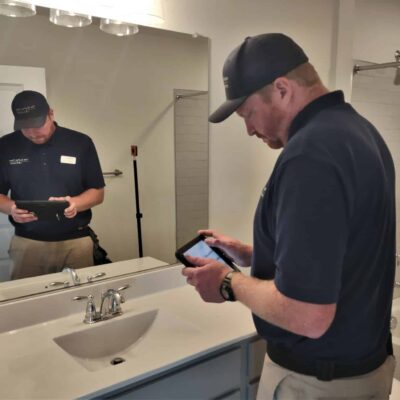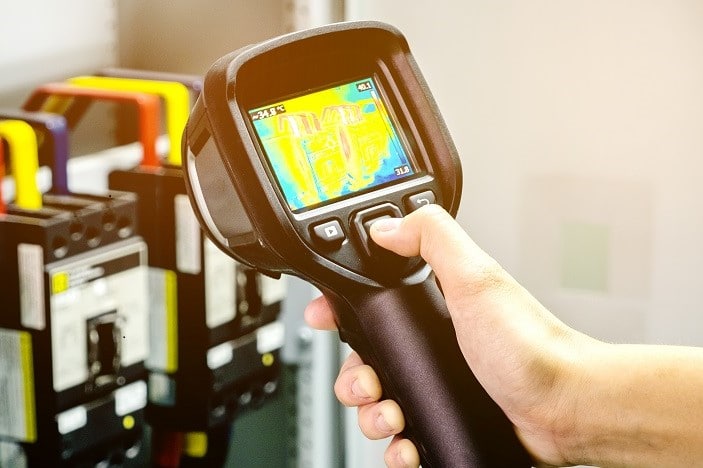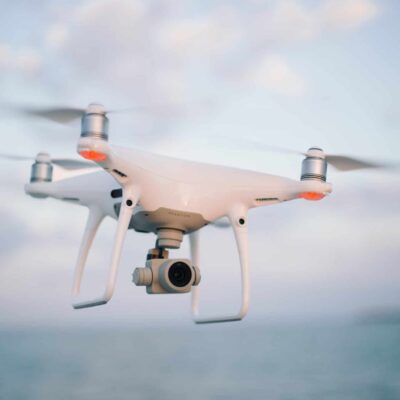Body cams and home inspectors: A new application
Last Updated November 9, 2023
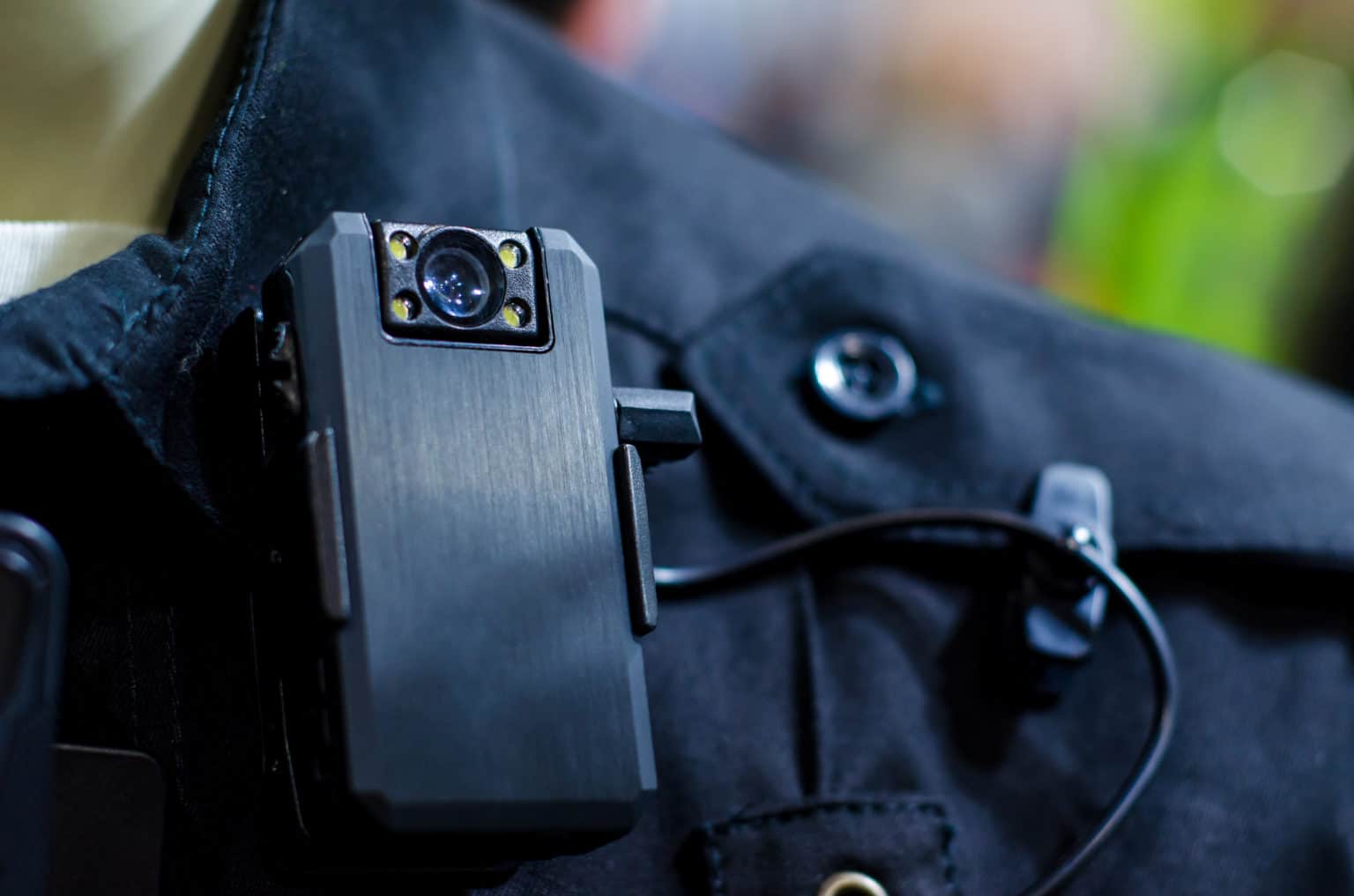
Recently, a real estate agent, representing a former mutual client, contacted Jon Bolton of The Inspectagator in Florida, claiming his team had “ruined” the client’s gutters. The agent sent a photograph of a dent in the gutters with a demand that the inspection company pay to install new ones.
The inspector who surveyed the property had set up his ladder beside the garage. The gutter damage in question was on the opposite end of the home. Without evidence, it would have been the client’s word against the inspector’s. Thankfully, the home inspector had worn a body cam.
The footage showed the home inspector setting up his ladder beside the garage, conducting his roof inspection, folding the ladder, and putting it away. As the inspector walked toward and away from the property with his ladder, you can even see the client observing the inspection from the driveway.
Body cams: The traditional applications.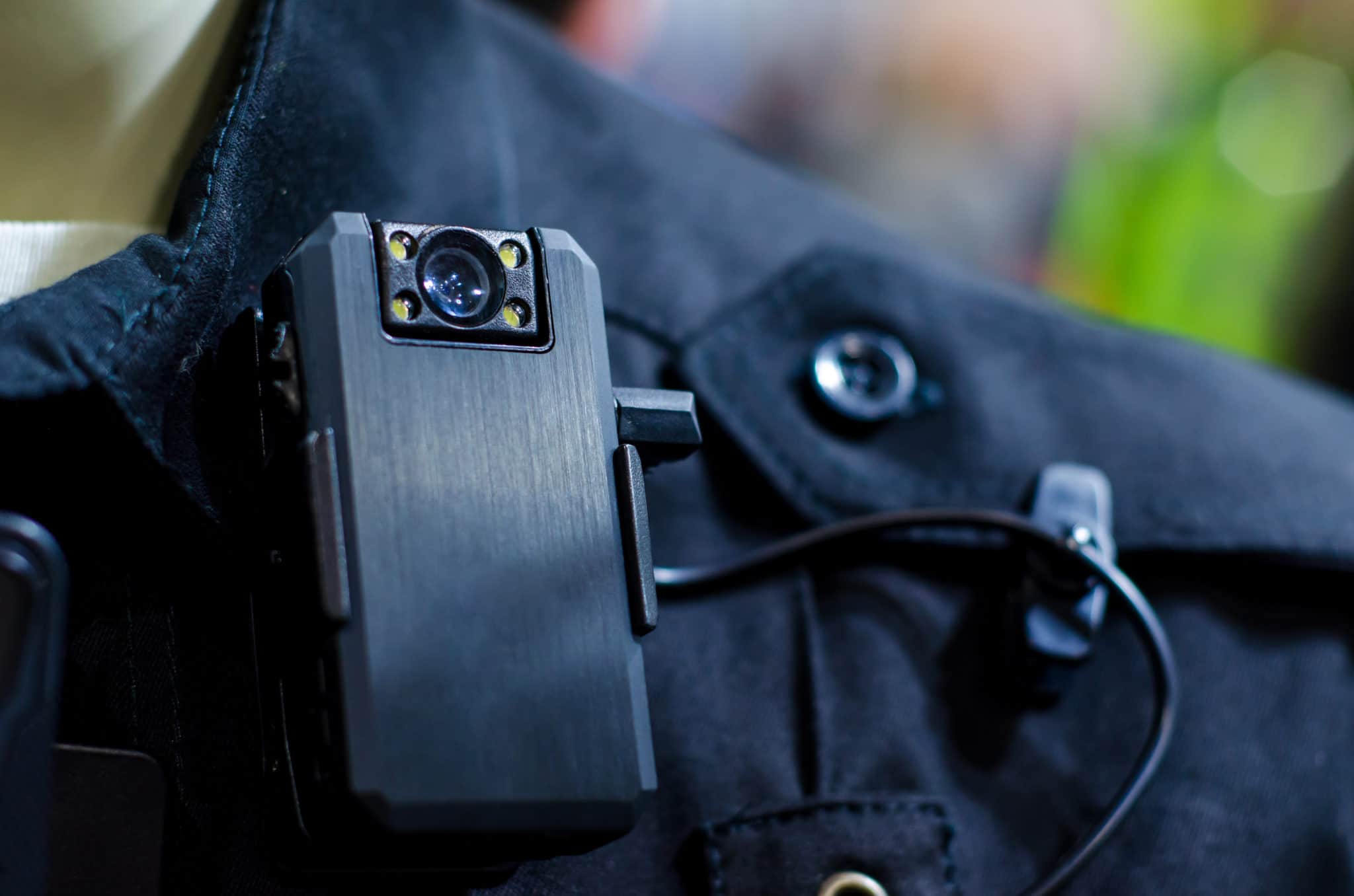
Body cams—also known as body cameras, body-worn cameras, wearable cameras, body worn video (BWV), and action cameras—record the wearer’s audio and video footage from a first-person perspective.
With a wide variety of applications, body cams have permeated both commercial and recreational markets.
- Law enforcement officers worldwide don body cams to increase police transparency, accountability, and community trust. Police officers have been both exonerated and charged based on body cam footage. In 2018, body cam footage absolved a Texas state trooper accused of sexual assault. Just this past March, a New York police officer was caught by his own body camera in multiple apparent acts of planting marijuana during traffic stops.
- Some military troops record combat with body-worn cameras. In 2011, the Oval Office watched live body cam footage of the raid on Osama bin Laden. More recently, the Discovery Channel used soldiers’ helmet footage to create the 2016 documentary series Taking Fire, which depicts the life-threatening situations American troops encountered in Afghanistan.
- Civilians, journalists, and filmmakers use body cams to capture everything from cliff jumps and shark dives to lion hugs and kitten rescues. One of the most notable videos: a camera tied to a weather balloon ascending from the Grand Canyon into outer space.
As showcased above, body cams’ hands-free recording conveniently and accurately captures the wearer’s experience. And in a profession all about reporting what you can see during your inspection, it’s no wonder why home inspectors are adopting the technology.
Why inspectors use body cameras.
By using a body cam in his inspection business, veteran Bronson Anderson of Inspector Homes Inc. in Virginia hopes to gain the same insights he obtained using body cams in the military.
“Being a military guy and being a combat infantryman, I tend to take what I’ve done in the military and try to apply it to my inspection business,” Anderson said. “The body camera really worked for us on the battlefield. We were able to digest what we did wrong, what we did right, and what we can improve on.”
(You can read more about how Anderson’s transition from soldier to inspector by reading “Military veteran finds joy in educating home buyers.”)
Ultimately, like the other inspectors we interviewed, Anderson hopes that using body cams will help him reduce his liability and mitigate frivolous claims.
As indicated in our previous example of Bolton’s inspection company, facing unfair allegations isn’t uncommon for home inspectors. In fact, in 2018, our claims team estimated that 80 percent of accusations against home inspectors are highly exaggerated, and most have no merit.
Here are five ways body cams are helping inspectors stifle meritless claims.
1. Body cams can dismiss false general liability claims.
As a home inspector, you’re used to being the scapegoat. If there are post-inspection defects in the home, if a property sale falls through, or if a subcontractor’s bill is too high, you often assume blame.
Unfortunately, when you receive a claim for an error or omission, or bodily injury or property damage, the burden of proof is on you. You must be able to show that you were not at fault. Proving your innocence begins with your inspection report, which should include lots of photos. (To learn more about the types of photos you should be taking to manage your risk, read “3 inspection photos you should take to manage your risk.”)
However, sometimes your typical home inspection report isn’t enough. While written narratives coupled with still photographs can prove a system or component’s status at the time of the inspection, they cannot dismiss allegations of damage caused by the inspector.
There is no good way to prove with a written report and a photo that the damage existed before the inspector arrived. For example, a claimant could argue that their inspector damaged their property and then took a photo. While this doesn’t dismiss the importance of and need for written and photographic evidence, it introduces the need to consider additional forms of documentation.
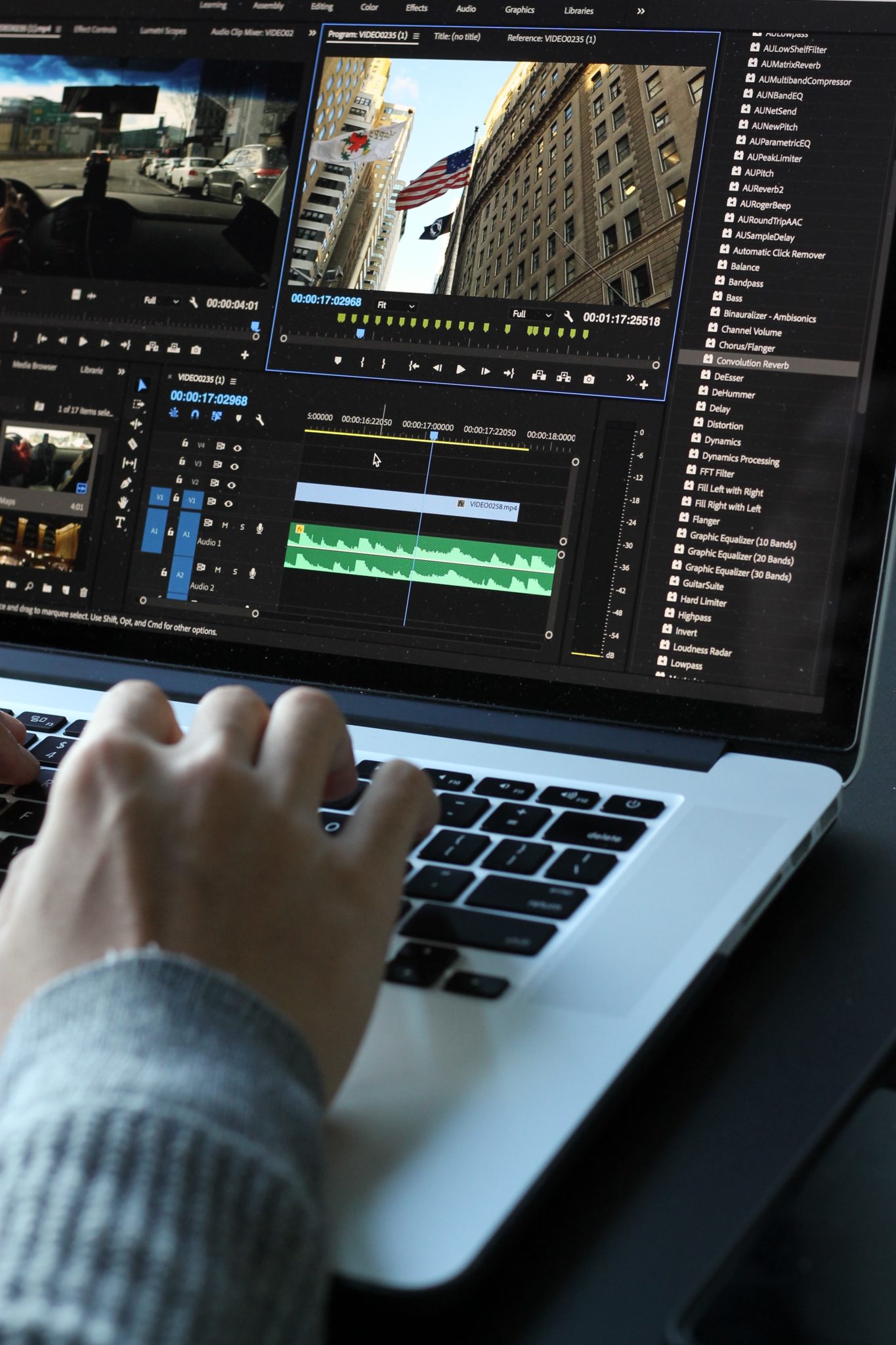 Body cams: an additional form of exonerating evidence.
Body cams: an additional form of exonerating evidence.
Body cams may be that additional form of exonerating evidence.
On the first day Matt Hawley of Hawley Home Inspections, LLC in Missouri and Illinois wore his body cam, he encountered an extreme example.
“At the end of the inspection, the seller walked over and grabbed a mini blind and ripped it off the wall. While I stood there, recording it, [he] accused me of breaking his mini blind,” Hawley said. “I walked out, got in the van, called the office, and told them to order [body cams] for all the inspectors [in his company] right then.”
When a homeowner accused Bolton’s team of damaging their roof tile, Bolton used body cam footage to prove the tile was broken before they began their inspection. In the video, Bolton’s inspector can be seen pointing to broken tiles as he approaches them. The audio, too, confirms what the inspector’s doing as he narrates, “Oh, look, there’s a broken one.”
“Had we not had a body cam, we could not prove [our innocence]. It’d be a he said, she said,” Bolton said.
In another instance, a home seller accused The Inspectagator team of breaking several glass vases and glass flowers stored in the garage. The body cam footage showed the vases and flowers intact both before and after the inspection.
2. They can disprove improper accusations of theft.
Body cams can assist in proving you didn’t steal any property, too.
Recently, a seller accused Hawley’s inspectors of stealing nearly $4,000 worth of jewelry. To prove their innocence, Hawley turned the body cam footage from the inspection of the seller’s property over to law enforcement. The police officers watched the footage from beginning to end.
According to the police, not only did the home inspector not steal the jewelry, but there was no jewelry visible throughout the inspection. The seller had to drop the charges.
3. They can help you train employees.
Body cam footage isn’t just for dealing with complaints. It can help you prevent them, too. By reviewing body cam recordings with your employees, you can teach them good inspection practices and help them avoid making mistakes.
For example, Hawley uses body cam footage of uncommon property features and defects to help train his employees.
“I’ve been [inspecting for] 10 years, and I still run across something now and then that I’ve never seen,” Hawley said. “I’ll show that video [of something new] to everybody.”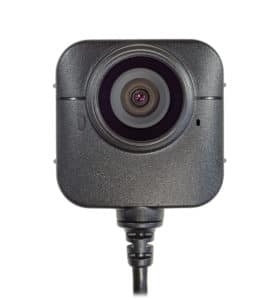
Anderson, too, recommends using your own body cam footage as a training tool. He also suggests reviewing your employees’ footage to help them uncover anything they might have missed and to give them tips on how to improve.
“[New hires] can look at my body camera footage and see what I see and how I look at things,” Anderson said. “Even when you send new inspectors out on their own, you can go back with your employees and look at what they’re looking at and follow along in their report that they’ve written before they submit it to the client.”
According to Anderson, body cams can also keep employees honest.
“If they’re recording the entire inspection process and they’re skipping over windows, doors, or outlets, you’re able to provide those checks and balances for your employees,” Anderson said. “And it allows them to think twice about taking a shortcut around the inspection process.”
4. Body cams can attest to the work you performed.
By recording your entire inspection, body-worn cameras can document what you did and said. Doing so can provide key evidence to dispute claims that you failed to inspect, report, or otherwise do your due diligence.
Inspect.
Body cams can provide evidence that you inspected the components and systems you said you did. For example, another home buyer claimed Bolton’s inspectors didn’t test the bath, microwave, or water heater. Footage revealed the inspectors testing each one, proving they tested each component and that they functioned at the time of the inspection.
Report
Because BWV captures audio, it can confirm information you provide in your verbal report.
Hypothetically, a client could deny that you told them about a component that needed to be repaired or replaced. With recordings of conversations you have with this client, you can prove not only what you said in your report but what you said in person. This can be particularly helpful when clients feign ignorance or suggest you should’ve made them more aware of a defect.
According to Anderson, body cams can help bolster your written reports, too.
“[A body cam] gives you the possibility to document step by step, everywhere you go in the house,” Anderson said. “When you’re fine-tuning your inspection report, you’re able to go back through that video. And there are some things that you could miss, or there are things that you can add from that video [to your written report].”
Due Diligence
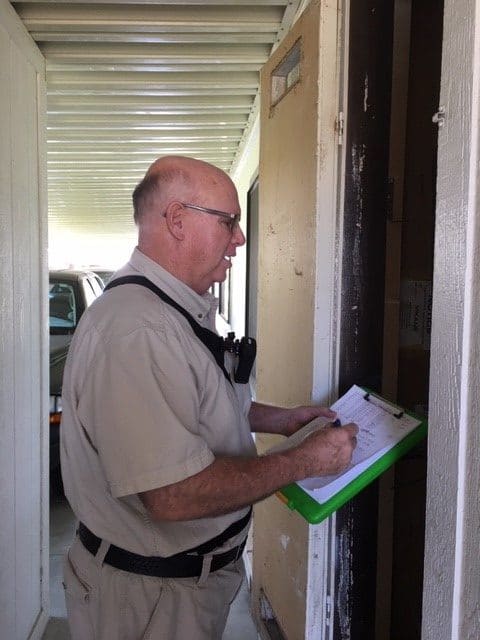
Will Kading from Master Building Inspection & Environmental
After one inspection, a seller accused one of Hawley’s inspectors of leaving the water running in the kitchen sink. Allegedly, the sink had overflowed and ruined the kitchen floor and some property. Not only did the inspector’s body cam show that the kitchen sink wasn’t running when he left, but Hawley’s cam showed the kitchen sink off when he came through to do a sewer scope inspection two hours later.
For Will Kading of Master Building Inspection & Environmental in California, having hard evidence of his verbal communication with clients helps stifle disagreements with real estate agents that attempt to represent his inspection findings inaccurately.
“I was getting tired of having realtors say one thing, and I was saying another thing. That’s one of the main reasons I [started using body cams]: to back myself up,” Kading said.
According to Anderson, documenting your inspections with a body cam can help you not just after your inspections but during them. During a recent inspection, footage helped Anderson return an inspection property to its pre-inspection condition.
“[After] I [had] set the thermostat for the heat pump system…I had forgotten where the original set temperature of that thermostat was. And so I went back to the video on the body cam and saw the video of what the original thermostat temperature was. And I was able to set it back to that original temperature,” Anderson said.
5. They can provide evidence of any wrongdoing done to you.
Inspecting homes is a dangerous job. From slippery roofs to electrical hazards, rotted subflooring to invisible toxins, the average home inspector encounters countless perils during their careers. Unfortunately, some of those dangers are the fault of others.
In an InterNACHI webinar last year, Lee Hamilton of RoadScan Canada, a body cam retailer, told the story of a home inspector attacked by a pit bull during an inspection. Because the inspector was wearing a body cam, he was able to prove that the dog did, in fact, assault him and that the inspector was not at fault. The footage defended the truth and the inspector’s reputation.
(To learn more about protecting yourself from animal attacks, read “When animals attack: How to protect yourself and your employees from animal-related inspection injuries.”)
Even if you don’t experience bodily harm, you can experience financial and reputational harm if someone lies. Members of Hawley’s team confirm that clients have signed the pre-inspection agreement and don’t have any questions—with the camera rolling. By recording this, Hawley has evidence to disprove possible allegations of him not giving clients the agreement or pressuring them to sign it.
Investments inspectors make.
When introducing body cams to their inspections, home inspectors must make several up-front investments. Common investments include equipment and storage.
Equipment.
Body cameras run anywhere from $150 to $500 depending on features like battery life, memory, infrared, and resolution. Several makes and models are available through online retailers like Amazon or through the manufacturers themselves. RoadScan Canada, mentioned earlier, markets and sells body cams specifically to home inspectors.
Storage.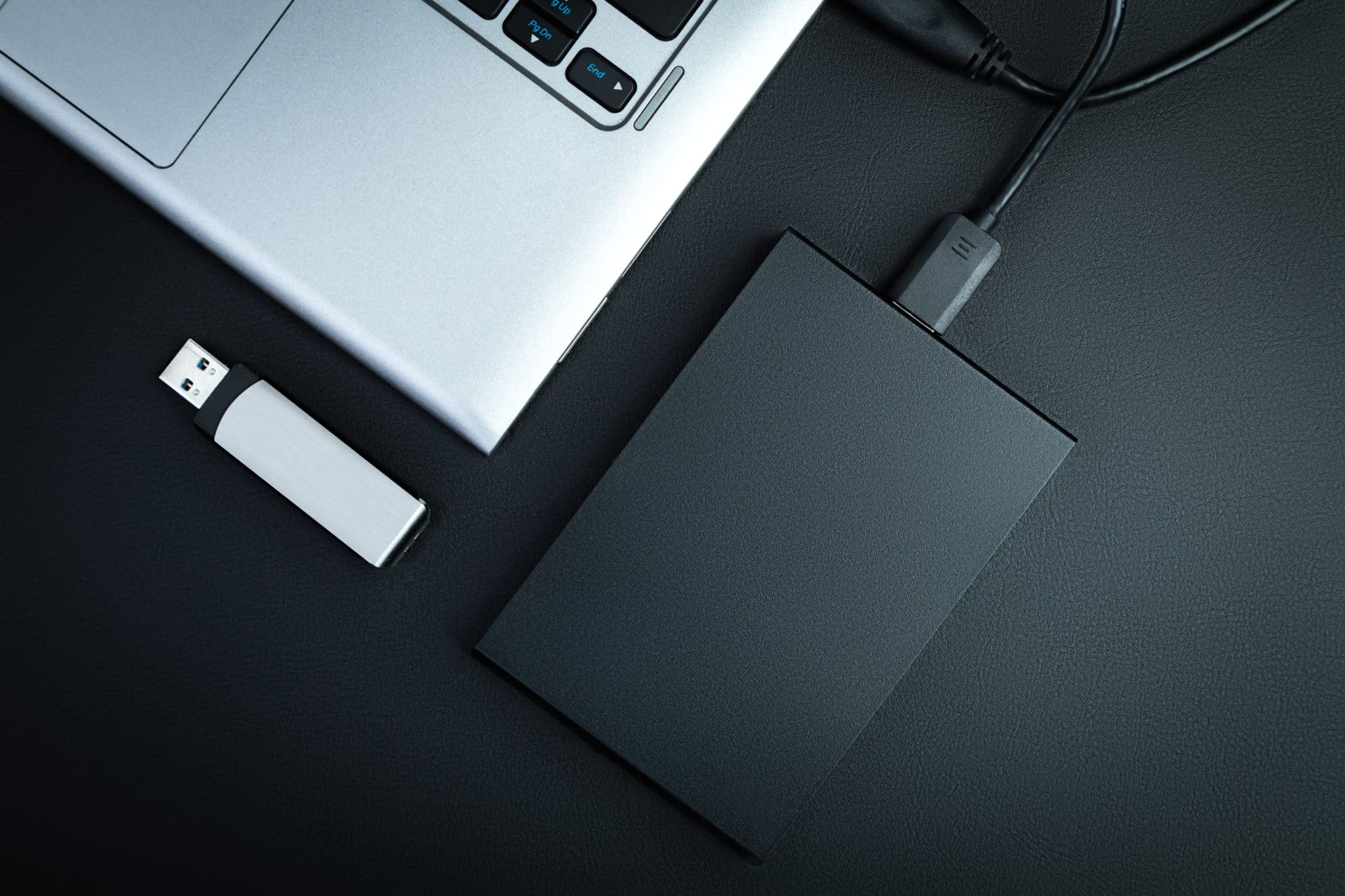
For body cams to adequately defend your inspection business, you need to store their footage. Since inspection-long video files tend to be large, your computer is unlikely to be able to store the footage on its own. Home inspectors must invest in additional digital storage solutions, such as external hard drives or cloud storage.
Once recorded, how long should you keep body cam footage around? Claims professionals urge home inspectors to keep inspection assets—including body cam videos—for a minimum of five years.
For some, the initial cost of digital storage may seem cumbersome. However, as Bolton suggests, investing in digital storage space can help inspectors avoid more costly claims.
“Who cares how much [digital storage] space it takes? It doesn’t make any difference if it saves me, worst case scenario, a deductible [payment],” Bolton said.
(To learn more about storing your videos, read “Inspection assets: How to store inspection contracts, reports, photos, and videos.”)
Limiting your liability against body-cam-related claims.
Although wearable cameras are not a new technology, their application in the home inspection industry is still relatively recent. As such, there isn’t much claims data to definitively indicate best practices. However, based on body cam usage in law enforcement and risk mitigation techniques for other types of claims, we can provide some educated guidance on how to use body cams safely.
Be a good inspector.
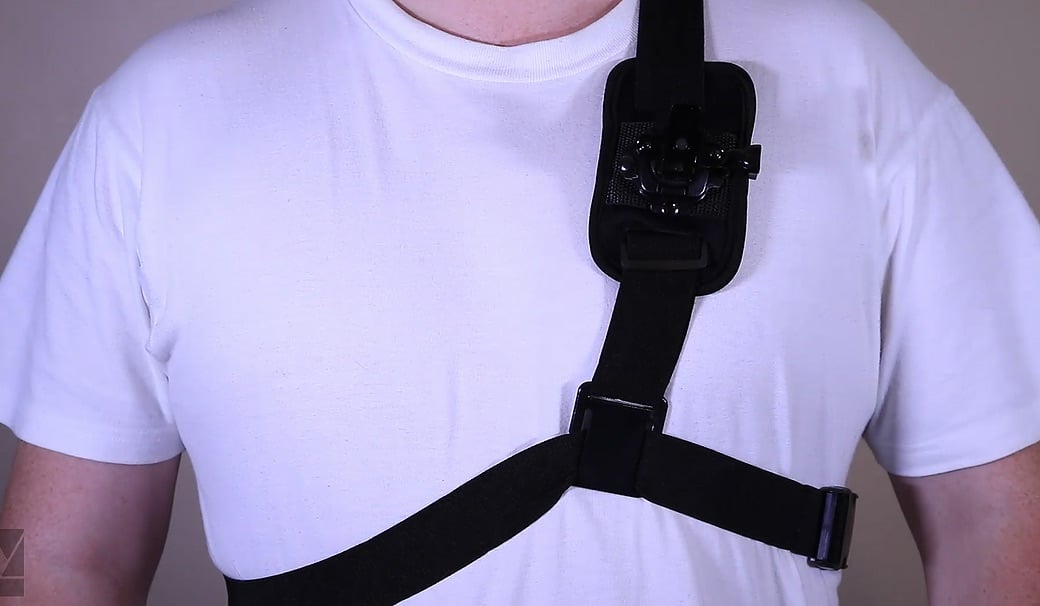
Photo courtesy of Will Kading.
Just as BWVs capture law enforcement’s best and worst behavior, your body cam will reveal what you’re really up to at inspections. If you’re thorough, knowledgeable, and conscientious, that will come across in your footage. If, however, you are rushed, inexperienced, and inconsiderate, that, too, will be apparent from your footage. Body cam footage can only help you if you’re a good inspector. But if you’re not, the video footage is likely to open you up to additional liability should it be obtained by others.
“If you’re worried that it’s going to prove you didn’t do something, you’re not doing it to begin with,” Hawley said. “If you’re doing your job and you’re doing it right, [a body cam] will protect you. [But] if you’re cutting corners and you are doing a sloppy inspection, it will bust you every time.”
It takes some practice to be a good inspector with a body cam, too. Hawley, Bolton, and Kading invested time into figuring out the best way to secure the body cam to capture quality footage. Kading recommends practicing recording with your body cam in your own home before ever recording for a paid inspection.
Continue to take still photos.
Just because you’re capturing video, it does not mean you should stop taking still photos. In case you haven’t heard it enough, here’s the old adage again: A picture is worth 1,000 words. In an industry like home inspections, photos can do wonders. They can help inspection clients understand your findings and put them into context. They can bring reports filled with descriptions laced with technical jargon to life.
Note that some body cams allow you to take still photos during and post inspection. While Kading prefers taking photos with his traditional camera, he will also go through the video footage after the inspection and take stills to supplement the ones he’s already taken.
It may seem tedious taking photo after photo. However, inspection photos are one of the best ways to manage risk. Don’t let your next allegation be a battle of “he said, she said.” Take lots of pictures so you have a photo to back you up in every scenario.
Capture full and uninterrupted footage.
From the moment they pull up to the property, Bolton and his inspectors are filming. The inspectors continue to film uninterrupted until they return to their vehicles.
Capturing full and uninterrupted footage like The Inspectagator team does is essential. Failure to do so may lead to you missing something important. It can also lead to allegations of editing the footage to tell a different story from the truth. Imagine if our anonymous inspector accused of stealing the jewelry had not filmed every second he was in that house? He likely wouldn’t have been able to prove he didn’t go near the bedside table during the inspection.
Don’t release the footage to clients.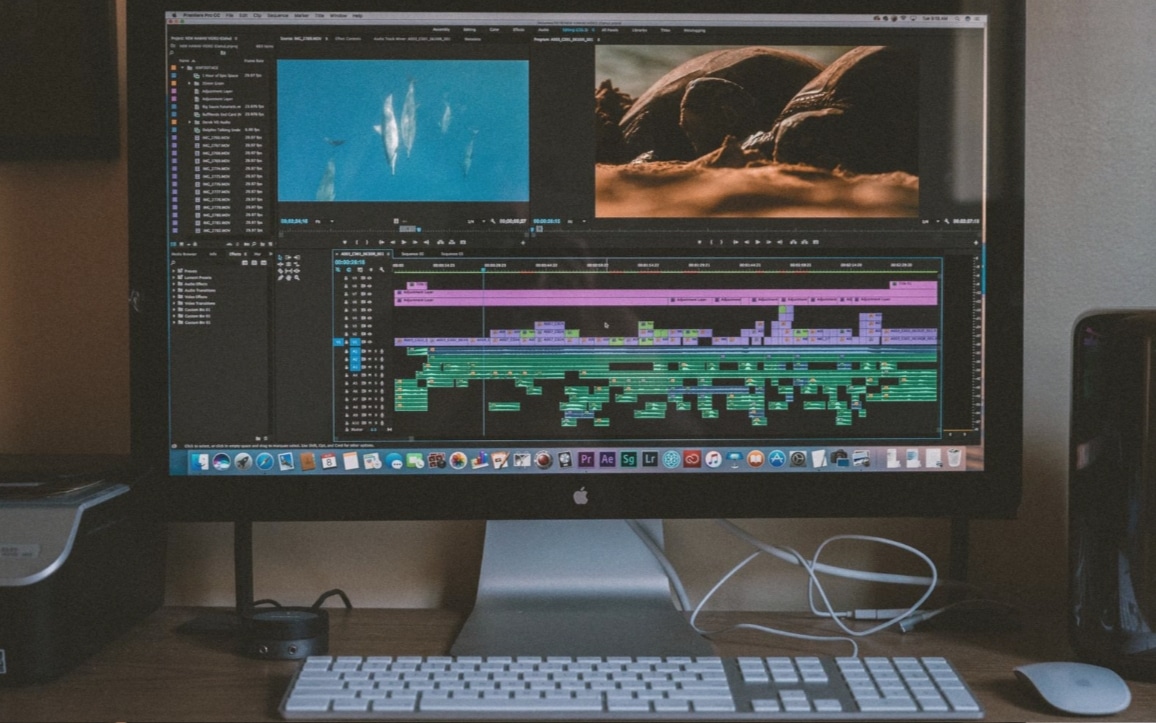
No technology is perfect, not even body cams. The cameras can only record what they’re facing, and so they may provide an incomplete picture of what you’re seeing. Even though cameras capture what you’re inspecting, without your insight, your client may not be able to contextualize the footage.
Additionally, you’re not perfect. Even the best of inspectors can make mistakes. If your body cam captures an issue you missed, it could be used against you in a court of law. And there’s nothing you can put in your pre-inspection agreement to prevent clients using your own footage against you.
While the footage would be discoverable—or useable—in litigation, you’re not required to share the footage unless you’re getting sued. Thus, we recommend not releasing the footage to clients unless you’re required to as part of a lawsuit.
However, there are some instances in which releasing body cam footage to your clients may make sense. For Kading, offering clients footage for a fee allowed clients who couldn’t attend to participate in a virtual inspection. This offering was particularly useful during the peak of the COVID-19 pandemic earlier this year.
“I get compliments all the time, [saying,] ‘Wow. We didn’t have to be there [and] we [still] see all the stuff,” Kading said.
If you include the footage in your report anyway, we recommend talking through the inspection while you perform it. This way, your clients will have context to what you’re seeing and doing. Also, make sure you review the video post-inspection. A review will give you a second chance to see something you might have missed.
If someone dislikes your body cam, consider cancelling the inspection.
Recently, a client expressed discomfort with Anderson filming the inspection. However, Anderson dissuaded the client’s concerns by explaining how he intended to use the footage.
“I had to assure them that [the footage] was only for my benefit,” Anderson said. “I’m just taping and recording what I’m doing for my sake and my education.”
Thus far, Bolton has not had anyone complain about his team wearing cameras. If someone were to object to their use—say, for privacy reasons—Bolton says he’d cancel the inspection.
“I don’t feel comfortable not being able to defend myself. I wouldn’t do [the inspection],” Bolton said. “This is our standard. This is what we do. Period. Unapologetically and authoritatively state it like that, [and] nobody argues.”
You, too, may want to consider cancelling inspections if someone objects to you using a body cam. After all, if you’re reasoning for using BWV is to mitigate risk, you don’t want to sacrifice that protection.
However, cancelling inspections may not be a feasible or desirable option for every inspector. Gregory Pomp of Just Right Inspection Service in Illinois stopped wearing a body cam because it made many of his clients uncomfortable.
“It all depends on your comfort level and how much liability you really are comfortable accepting,” Pomp said. “In my opinion, [a body cam] is a turn-off for the client, and I wouldn’t risk losing an inspection over something like that.”
Body cams and your home inspections.
Are you tired of having “he said, she said” arguments with clients? Do you want a way to prove your team didn’t damage or steal any property? Are you looking for a way to better dismiss frivolous claims?
If you answered “yes” to any of these questions, perhaps it’s time for your inspectors to start wearing body cams.
“When [an inspector] does something right, like they’re supposed to, it’s just wrong for people to roll the blame, trying to collect a check so they don’t have to pay for it,” Bolton said. “Both [the insurance company] and I would be continuing to write checks if we didn’t have body cams.”
Note: This article was partially edited for clarity on November 8, 2021. It also appeared in the January 2022 issue of the ASHI Reporter, which is available to ASHI members in print and online.


